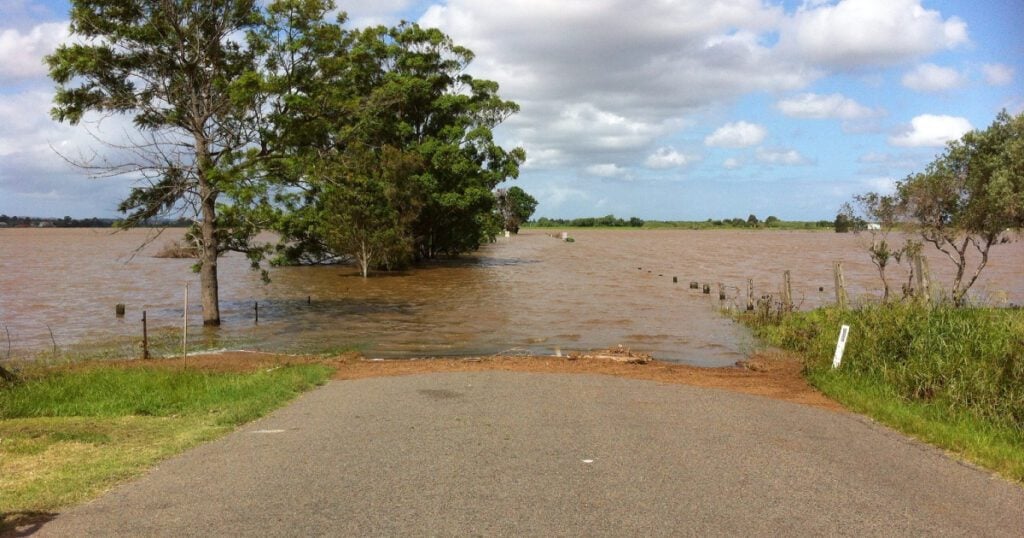How you can use tax pooling like a savings account
In business, cash is king, and being able to access funds quickly in a crisis can mark the difference between success and failure. In an unpredictable and volatile world, having the ability to access cash during challenging times can be priceless.
Just ask the taxpayers who were able to access provisional tax payments they had deposited in the TMNZ tax pool when COVID-19 brought the world to a standstill.
With tax pooling, companies can easily request refunds of provisional tax payments they have made at the year to date without waiting to file their tax returns. They can receive their refunds within a matter of days.
Tax can be one of the largest expenditure lines for a business, so flexibility is vital.
In this economic climate, it’s far from ideal to have large sums tied up with the IRD.
What if you can’t access the money in an emergency?
What if your profitability projections trend down over the year, meaning you’re likely to overpay?
For taxpayers with a 30 June year-end, the first instalment of provisional tax is due on 28 November. Every business and sole trader should ask themselves the questions above, especially if their work is seasonal or cyclical in nature.
Businesses should also think about the accessibility of their funds if their income is difficult to predict or fluctuates due to factors such as commodity prices, adverse weather events, or the exchange rate.
Accessible tax money
Depositing tax payments into a tax pool can form part of an effective risk management strategy in times of uncertainty.
Look at it like depositing into a savings account with the added benefit of eliminating late payment penalties and IRD interest. You can still access your funds if you need to, you’re covering yourself for tax time and possibly extending your time to pay.
How depositing provisional tax into a tax pool works
Tax pooling operates with the blessing of the New Zealand tax department. TMNZ has been a registered provider of the service since 2003.
Companies deposit their provisional tax payments into a shared pool instead of directly into their own IRD account.
Each payment is date stamped as at the date it is made into the pool (e.g., 28 November). Funds are held in an account at the IRD. This account is managed by an independent trustee, Guardian Trust.
A taxpayer holds their payments in the pool until it instructs TMNZ to transfer their deposits to their own IRD account.
Taxpayers can request a refund from TMNZ of provisional tax deposits held in the pool at any time without having to file their tax return or an estimate with IRD.
Refunds may be subject to meeting anti-money laundering requirements. (Corporate taxpayers also need to be mindful of imputation credit account impacts when requesting a refund of tax they hold in the pool).
A taxpayer typically instructs TMNZ to transfer their tax deposits to their own IRD account once they finalise their tax return and know the amounts required at each instalment date to satisfy their liability for the year.
As the tax being transferred from the TMNZ tax pool to a taxpayer’s IRD account has been date stamped to when it was originally paid into the pool, IRD recognises it as if the taxpayer paid the whole amount on time.
This remits any IRD interest and late payment penalties showing on the taxpayer’s account.
Access previously paid funds
If you’re short on cash, tax pooling also allows you to temporarily withdraw deposits you hold in our pool.
You can access the amount of provisional tax funds you have deposited (minus an upfront interest cost). You also have the option to restore your deposit at the original deposit date once your cashflow situation has improved.
Buy some time
When preserving cashflow is high on the agenda, you can use a tax pool to defer upcoming provisional tax payments to a date in the future without incurring late payment penalties.
For example, someone with a 7 April terminal tax date could have up to 75 days from that date to settle their provisional tax.
Earn more interest if you’ve overpaid
If you have surplus tax remaining in the pool once you have transferred money to the IRD to satisfy your liability, you can earn interest above the IRD’s credit interest rate by selling the excess tax to other pool members that have underpaid for the year or have received a notice of reassessment from the IRD.
Please note that this is subject to market demand.
The purchasing taxpayer can reduce the interest cost faced on their underpayment significantly when applying this tax against their liability. This also eliminates any late payment penalties.
Overpayers earn more interest while fellow taxpayers pay less. Everyone’s a winner!
Find out more
To learn more about managing your provisional tax, check out our tax finance guide and cashflow management tips for businesses.
Alternatively, please get in touch with our friendly support team if you have any questions. We’re always happy to help.
How tax pooling can help your tax management
Meet Andy, a builder who has run his own business for three years. Things are going well, and he’s set to make a substantial profit in the current financial year. He’s well-paid and smart enough to set aside tax he owes with each payment. But clients don’t always pay him on time, causing some serious headaches.
Like many businesses, Andy experiences cashflow issues. He makes a profit but doesn’t always have enough funds in his account to pay provisional tax when it’s due.
What should Andy do? Grin and bear the Inland Revenue’s late payment penalties and use of money interest charges after missing his payment dates? Or seek a better option?
Luckily, Andy’s accountant Lisa knows all about tax pooling and how it can relieve the financial pressure.
Tax pooling explained
Andy asks his accountant how tax pooling works and some of its main benefits.
Lisa explains that tax pooling has been available to taxpayers for two decades, starting in 2003 when Tax Management NZ (TMNZ) became a registered provider with IRD.
The accountant says tax pooling has clear benefits over traditional tax management:
- Taxpayers can choose to pay their liabilities in a time and manner that suits them, without having to worry about IRD interest and penalties.
- They can make significant savings on use of money interest charged and eliminate late payment penalties if they miss or underpay provisional tax, or if they are reassessed by IRD.
- When taxpayers overpay into the TMNZ tax pool, they can earn a much higher rate of interest on overpayment of funds than they would receive from the IRD.
Who oversees TMNZ’s tax pool?
Lisa assures Andy that all payments made into TMNZ’s tax pool account at the IRD are managed by an independent trustee, Guardian Trust.
Guardian Trust oversees the bank accounts into which taxpayers pay their money, as well as the transfer of funds from the TMNZ tax pool to Andy’s IRD account.
Because the tax being transferred has been paid and date stamped as at the original due date, any penalties and interest are wiped once the payment is processed by the IRD.
Companies of all sizes can use tax pooling
Tax pooling can help businesses of all sizes, from companies with thousands of employees down to sole traders. TMNZ’s tax pool is the largest and most established in the country.
Lisa’s research found two companies TMNZ has helped.
One company uses tax pooling to counteract fluctuating seasonal revenue:
“It takes away all those stresses. You’re passing it on to somebody else and saying, ‘take care of this for me, I don’t know what to do, we’ve got a shortage of cashflow’ and it’s the best way of putting more energy into your business and doing the things that you’re good at.”
The second company uses a tax pool as they need to invest in equipment regularly.
“With a business like ours, we are investing quite heavily into assets like cars, campers, and boats. Cash upfront is important [for] us to have.”
Tax Management NZ has helped both companies manage working capital and mitigate the risk of fees and penalties.
“What is the cost of this?” Andy asks.
“Just TMNZ interest,” Lisa replies.
Tax pools can help with voluntary disclosures and audits
Lisa looks through Andy’s expected outgoings for the year. These range from the cost of living to many other expenses associated with owning a business.
The accountant realises that in a previous year, Andy made a mistake on one of his returns and must file a voluntary disclosure with the IRD.
“How can Andy get ahead with the current year if he now has to pay an additional amount of tax for a past year?” Lisa wonders.
TMNZ can assist taxpayers who owe an increased amount of tax as a result of a voluntary disclosure or audit.
Tax pooling provides 60 days from the date the IRD reassessment notice was issued to buy the tax payment he needs and send it to the IRD.
The different tax types available to purchase are historic income tax payments, deferrable tax, and agreed delay tax, as well as other tax types such as GST, RWT, PIE, FBT, NRT, and DWT.
Lisa can use TMNZ to reduce the interest and late payment penalties cost of Andy’s voluntary disclosure.
For the current tax year, Lisa can set up either a Flexitax® or Tax Finance arrangement to give him more flexibility and time to pay (up to 75 days past his terminal tax date for that tax year).
Lisa has other clients that are medium-large taxpayers with big bills and paydays. TMNZ’s Tax Deposit product can help them.
Other advantages of tax pooling
There are several other advantages to using a tax pool:
- Excess funds paid into the pool can either be used for future dates and any other tax types where a reassessment has not been issued.
- There’s the option to sell surplus tax to a taxpayer who has underpaid to earn additional interest.
- The refund process is much faster than directly through the IRD (within three to five days, and without having to file a return for the year).
Take back control
Take control of your tax management with TMNZ tax pooling — a more convenient way to meet your provisional tax obligations.
We offer solutions for all kinds of businesses and financial situations. If you’re new to paying provisional tax, check out our resources on managing tax and business cashflow here.
Ask your accountant about tax pooling options today, or get in touch with our team to find out more.
The 15 January provisional tax catch
Did you wait to file after 17 January?
Inland Revenue raised a provisional tax payment issue in the Tax Intermediaries update on 27 January 2022. Here we discuss the issue in more detail, as well as the help available to you if your clients are impacted.

Typically, for a client using the standard uplift method, when their tax liability is higher in the last financial year compared to the year prior to that, the accountant will hold off filing the last year income tax return until after the second provisional instalment date (P2). This is so they can get the benefit of basing the P2 amount on the year with the lower tax liability.
For this to be effective, they need to have an extension of time for filing the prior year return and file it after the provisional tax payment date. If the payment date falls on a weekend, then it moves to the next working day.
For the first time since rules changed in 2018, 15 January fell on a weekend, so it moved to Monday 17 January 2022. Therefore, people needed to wait until at least 18 January to file the 2021 return, not 16 or 17 January. An easy catch to miss.
Unfortunately, not everyone has noticed this, and as a result some 2022 P2 liabilities have been updated to reflect the higher liability based on the 2021 tax return. This may have resulted in a tax shortfall where payment was based on 110% of the 2020 Residual Income Tax (RIT).
For example, an accountant filed the 2021 return for their client on 17 January 2022 as this is after the 15 January instalment date. In this scenario, the uplift amount that was originally calculated based on the 2020 year has been changed to reflect the liability based on 2021. As the client's RIT was higher in 2021 compared to 2020, the provisional liability for P2 will be higher.
So, what help is available for those impacted? Taxpayers can purchase a tax shortfall from TMNZ which is recognised by Inland Revenue as an on-time payment. This will significantly mitigate their interest exposure. Please contact our support team if you would like to discuss this further.
Legislative references: Section RC 5 (3) of the Income Tax Act 2007 and SPS 21/03.
Syncing provisional tax to cashflow
As a self-employed painter and decorator, Bart Taylor knows full well how business owners can get themselves into strife if they don’t plan for their tax obligations.
He speaks from his own personal experience.
That’s why Bart is happy to talk about how Tax Management NZ (TMNZ) enables him as a self-employed tradesperson to take the stress out of having to pay provisional tax on dates dictated by Inland Revenue (IRD).
TMNZ offers Bart the flexibility to make the payments when it suits his cashflow.
As someone who doesn’t always get paid every week, that’s important because it offers his business some breathing space while he waits for the money he’s earned from completed jobs to land in his bank account and ensures that other important invoices can be paid in the meantime.
A bit about Bart
Bart owns and operates his own business in Christchurch.
He’s a one-man band and that’s the way he likes it. Plus, most of his work means he does not require a crew, although he will occasionally use contractors when required or on larger jobs.
Bart has been his own boss since 2013, when, at the age of 24, he decided to make a go of this painting lark on his own. The market in the Garden City was awash with painting gigs during the rebuild and becoming self-employed seemed like a low-risk move.
Fast-forward nearly eight years and his gamble has paid off. He is enjoying the benefits that come with self-employment and, as a husband and father in a young family, the better work-life balance he has achieved.
Tough tax lessons
Yet that’s not say that everything has been a bed of roses during that time.
“Becoming self-employed has been a bit of a rollercoaster. Lots of learnings, lots of difficult times, hard times,” says Bart.
“First and foremost, I’m a tradesman, so I am a worker. The back office, the organisation, the financial side of things is not my strong point. With the tax side of self-employment, I managed it very poorly for years because I was so young.”
Like other business owners, Bart wasn’t as prepared as he should have been and was “stung” in his second year of trading. That was when two years’ worth of tax was due. Ouch.
He admits having to pay provisional tax was “rough for a little while”.
“In the trade industry, you don’t always get paid every week and you need cashflow to run your business,” explains Bart.
“My accountant saw there was a risk of if we paid that tax bill in full, that I might fall short in other areas and he wanted to make sure that my relationship with my trade suppliers stay good and that the invoices I need to pay get paid on time, not just the IRD ones.
“He recommended Tax Management NZ and that freed up cashflow.”
Breathing space from IRD to manage cashflow
That’s because TMNZ gives Bart the flexibility to pay his provisional tax when it suits his business, without the consequences of steep IRD interest and late payment penalties.
It operates with the blessing of the taxman, too.
TMNZ makes a date-stamped payment to IRD on Bart’s behalf on the date his provisional tax is due. Bart pays TMNZ at a time when it suits his cashflow.
TMNZ transfers the date-stamped payment to Bart’s IRD account and IRD treats it as if Bart himself has paid on time. This eliminates any IRD interest and late payment penalties showing on his account.
“Sometimes the option of TMNZ, to be able to borrow some money for a short period of time, to make sure you hit that IRD deadline, frees you up with your cashflow until that payment [you are waiting on] comes through,” says Bart.
“The fee of using Tax Management NZ is so low and affordable in comparison to the failings of if you ran out of money in that time, or the scramble and the stress, so it’s definitely worth it.
“It’s changed my perception around making these tax payments. It takes the stress off of it.”
And how does dealing with TMNZ compare to dealing with IRD?
“You get a bit more of a personal touch with Tax Management NZ because you get a prompt response and it’s not a cookie-cutter [reply].”
Bart is one of many small business owners throughout New Zealand who benefits from the provisional tax flexibility TMNZ offers. Feel free to contact us for more information about our service or if you have any questions. We're happy to help. Alternatively, you can register with TMNZ here.
Cashflow relief for farmers impacted by flood or drought

Those impacted by flooding in Canterbury or drought elsewhere in New Zealand have another option to manage their cashflow.
It’s called tax pooling.
It lets taxpayers defer their upcoming provisional tax payments to a time that suits them, without incurring interest (currently seven percent) and late payment penalties from Inland Revenue (IRD).
The service – which has been operating with the blessing of the taxman since 2003 – is available through an approved commercial provider such as Tax Management NZ (TMNZ).
The impact of extreme weather
The Government has declared the recent flood in the Canterbury region as a medium-scale adverse weather event.
As those in this part of New Zealand assess the damage and begin the clean-up following the large deluge of rain, a big dry is beginning (or, in some cases, continuing) to bite other parts of New Zealand. The drought has been classified as a large-scale adverse weather event.
Farmers impacted by these contrasting weather events are being encouraged to act early and assess their options if they need assistance.
For those battling drought, some tough decisions around stock and feed will need to be made. In the Canterbury region, flooding only compounds the financial pressure as many were also dealing with drought beforehand.
Cashflow will be important during this difficult period.
Help is available
Managing tax payments will be a key consideration in managing cashflow too.
IRD, to its credit, is exercising some discretion.
It will allow farmers and growers affected by the Canterbury flood to make early withdrawals from the income equalisation scheme.
For those whose current or future income will be significantly affected by drought, IRD will allow late deposits for the 2019-20 income year up to 30 June 2021.
Early withdrawals are also available in the case of a medium-scale adverse event or if someone is suffering serious hardship.
Please note a taxpayer must satisfy certain criteria for IRD to exercise its discretion around the income equalisation scheme.
There's also the option of re-estimating provisional tax.
However, while that allows someone to get a refund of tax they have paid earlier in the year, it does come with some risk.
Free up cashflow by deferring payment of provisional tax
Farmers growers with a May balance date are due to pay their the final instalment of provisional tax for the 2020-21 income on 28 June.
For a small interest cost, someone can use TMNZ to defer this payment.
We make a date-stamped tax deposit to IRD on behalf of a taxpayer on 28 June and the taxpayer pays us when it suits their cashflow.
A taxpayer can either pay the full tax amount at a date of their choosing or enter an instalment arrangement.
When a taxpayer satisfies their arrangement with TMNZ, IRD will treat it as if the taxpayer had paid on time. Any interest and late payment penalties showing on their account will be remitted.
A taxpayer has up to 12 months to pay their 28 June provisional tax with TMNZ.
TMNZ’s interest cost is much cheaper than what IRD charges when someone pays their tax late.
Please click here to register with TMNZ. Alternatively, feel free to contact us if you have any questions.
Bright-line test: Don’t get caught by ‘change-of-use’ rule fishhook

Anyone who lives away from their main home for more than a year will be liable to pay income tax on any profit they make from the sale of a residential property sold within the new bright-line period.
That’s because of the introduction of a ‘change-of-use’ rule that came into effect when the Government amended the legislation earlier this year, in its bid to cool rampant property prices in New Zealand.
For salary and wage earners who are renovating their house, away on secondment or looking to build a property, a hefty and unpleasant tax bill may be lying in wait as a result of this fishhook.
Detailed explanation
Under the bright-line test, an exemption applies if the property a person is selling is their main home.
Prior to 27 March 2021, a property was considered a main home if the owner had lived in it or used it as a main home for at least 50 percent of the time that they owned it.
However, under the new bright-line rules – which apply to a residential property that someone purchases on or after 27 March 2021 and sells within 10 years – homeowners can only be away from their main home for a continuous period of up to 365 days.
Homeowners must treat the days they are away from their main home as ‘non-main home days’.
If someone is away for more than 12 months and then later sells their house within 10 years of acquiring it, the main home exemption will not apply.
This is the 'change-of-use' rule.
It means a person will have to pay income tax on the profit they make from that sale for the period they were not using the property as their main home.
Example
A homeowner sells a property six years after the start of the 10-year bright-line period.
During that six-year bright-line period, they had moved out and rented this house for 15 months while they lived and worked in another part of New Zealand.
Any profit will be split between the 15 months and remaining 57 months during the bright-line period. The homeowner is liable to pay tax on the amount of profit apportioned to the 15-month period.
The impact for salary and wage earners
This has potential – and unpleasant – tax ramifications for salary and wage earners who:
- Renovate their home.
- Live away from their main home due to being on secondment.
- Purchase a section with the intention of building a property, especially if it is going to take more than a year after buying the section to move into their newly built house.
The income a salary and wage earner receives from selling a property is added to their other income sources for that year.
For most, given the eye-watering sums some houses are currently fetching on the market, this will force them into the top tax bracket of 39 percent for that year. The top tax bracket applies to those earning income above $180,000.
There are potential provisional tax ramifications, too.
If the income tax liability from the sale of a property is $60,000 or more, a salary and wage earner will need to pay this by 7 May to avoid incurring IRD interest (currently seven percent) – even if there was no obligation for this person to pay provisional tax during the income year they sell the property.
This is because they fall outside the safe harbour provision.
They can, however, use an IRD-approved tax pooling provider such as Tax Management NZ to reduce this interest cost by a notable amount. The savings can be significant.
They will also enter the provisional tax regime during the following income year due to the previous year's income tax liability being greater than $5000.
Anyone who expects to be away from their home for more than 12 months will need to keep accurate records of the number of days they live away from the property as well as any deductible expenses they wish to claim against the property's sale proceeds.
Seek advice
The rules around the taxation of property are complex.
As always, we recommend you speak to an accountant if you have any questions or wish to err on the side of caution.
Make IRD interest, late payment penalties disappear

A missed or underpaid provisional tax payment often means a taxpayer is faced with a steep interest cost and potentially late payment penalties on top of what they owe.
However, tax pooling can make that go away.
A big frustration with Inland Revenue (IRD) is that it expects taxpayers to pay the correct amount of tax on the dates it sets. No ifs, no buts.
Fail to adhere to this rigid timetable or underpay and you will face the consequences.
IRD charges interest – currently seven percent – from the date the payment was due until you pay the outstanding amount.
Late payment penalties may also apply as follows:
- One percent the day after payment was due.
- An additional four percent if the tax amount (including late payment penalties) remains unpaid after seven days.
A tax pooling provider such as Tax Management NZ (TMNZ) operates with the blessing of IRD. It can be of assistance if taxpayers find themselves in this situation.
Where might this be useful?
In the event you missed your recent 7 May provisional tax payment – or any other instalment relating to the 2020-21 income year, for that matter – we can eliminate any late payment penalties for which you may be liable and significantly reduce the interest you pay.
You make your payment to TMNZ and we apply backdated tax that was paid to IRD on the original date(s) it was due against your liability.
The taxman treats it as if you paid on time once it processes this transaction.
This wipes any IRD interest and late payment penalties showing on your account.
You have the option of making to TMNZ a one-off payment at a date of your choosing or making regular instalment payments towards your liability over a longer period.
TMNZ gives you up to 13 months to pay your 7 May provisional tax for the 2020-21 income year.
Is your 2020 terminal tax overdue?
You still have time to use TMNZ to reduce the interest cost and eliminate late payment penalties if you have outstanding provisional or terminal tax liabilities for the 2019-20 income year.
However, you will have to act quickly.
Tax pooling legislation gives taxpayers an additional 75 days past their terminal tax date to pay their terminal tax.
If your terminal tax for the 2019-20 income year was due on 7 April 2021, you would have until 15 June to settle owe with TMNZ.
Reassessed by IRD
TMNZ can also assist with historic income tax payments and other tax types such as GST and PAYE if you receive a notice of reassessment from IRD.
You have 60 days from the date the IRD issues this notice to use tax pooling.
Please contact us if you have any questions.
Miscalculated your tax loss carry-back? Don’t worry – help is at hand

Tax pooling can reduce the interest cost a taxpayer faces significantly, if they have overestimated their loss under the temporary tax loss carry-back scheme.
Under the temporary Inland Revenue (IRD) scheme, those who expect to make a loss in the 2019-20 or 2020-21 income year can estimate that loss and use all (or a portion of it) to offset the profit made in the previous year.
A taxpayer can carry their loss back one year. For example, that would mean:
- Losses from 2019-20 income year can be carried back to the 2018-19 income year.
- Losses from the 2020-21 year can be carried back to the 2019-20 income year.
More information about the scheme and how it works is available here.
One of the major downsides of the loss carry-back scheme is a taxpayer falls outside of the IRD interest concession rules that apply for provisional taxpayers using the standard uplift method. This is because they must switch to the estimation method when determining the tax loss they wish to carry to back.
What happens if someone overstates their loss and receives a greater refund of tax for which they are eligible?
It means that normal IRD interest rules will apply for underpaid tax in the previous profit year.
For example, if someone with a 31 March balance date overestimated the loss they will make in the 2020-21 tax year and therefore has additional tax payable in the 2019-20 income year, IRD interest will apply from 28 August 2019, the date of their first instalment for the 2019-20 income year.
As of 8 May 2020, IRD charges interest of seven percent.
Moreover, the COVID-19 relief relating to remission of IRD interest is not available to taxpayers who use the temporary tax loss carry-back scheme.
How Tax Management NZ can help
If it turns out you have additional tax to pay in the 2018-19 or 2019-20 income year due to overstating your loss during the 2019-20 or 2020-21 income year, then help is available.
As an IRD-approved tax pooling provider, Tax Management NZ (TMNZ) can mitigate your exposure to the interest incurred on this tax.
That’s because we can apply backdated tax paid to IRD on the date it was originally due against your liability.
You make a payment directly to TMNZ comprising the core tax amount plus our interest. We then arrange a transfer of the tax you require from our IRD account to your IRD account.
The interest you pay TMNZ is significantly cheaper than what IRD charges for underpaid tax.
Once IRD processes this transaction, it will treat it as if you paid on time.
This clears any IRD interest and late payment penalties showing on your account.
Legislative deadlines do apply.
If you have any questions about tax pooling, please feel free to contact us. We’re here to help.
IRD payment allocation rules explained

Provisional tax payments made on or before the date of the final instalment for the year are applied to the oldest overdue tax amount first while payments made after the date of the final instalment are applied to the interest owing on any overdue tax first, then the overdue tax amount.
The IRD payment allocation rules – which are found in s120F and s120L Tax Administration Act 1994 – also apply to payments made via a tax pooling provider such as Tax Management NZ (TMNZ).
It’s important to understand how they work and differ from one another.
Detailed explanation
Section 120L covers provisional tax payments made on or before the date of the final instalment for the year.
It requires IRD to apply a payment to unpaid tax in order from oldest to newest. Please note the unpaid tax amount(s) include late payment penalties.
Section 120F deals with payments that are made after the date of the final provisional tax instalment for the year.
It requires IRD to apply payments, in the following order, towards:
- The interest accrued on the oldest unpaid tax amount until that interest is paid.
- The oldest unpaid tax amount until that tax is paid.
- The interest accrued on the next oldest unpaid tax amount until that interest is paid.
- The next oldest unpaid tax amount until that tax is paid.
- To each subsequent arising interest and unpaid tax amount using the pattern above, in time order that relevant unpaid tax arises, until they are paid.
Again, the unpaid tax amount in s120F includes late payment penalties.
The ramifications
These allocation rules mean a taxpayer may well find a tax payment they intended to be destined for a particular instalment date is allocated by IRD’s system to earlier unpaid amounts first.
For example, let's say they may make a $10,000 payment on time and in full on 15 January 2021. However, if they failed to pay their 28 August 2020 (P1) provisional tax, then their $10,000 payment will be applied as per s120L to the overdue tax amount (including late payment penalties) at P1 first.
As such, this leaves them exposed to additional (and unexpected) late payment penalties and interest.
It does not matter if the $10,000 payment they made on 15 January 2021 is a date-stamped transfer from the account of a tax pooling provider. Please see sRP19 (1B) Income Tax Act 2007.
In other words, you need to clear the tax liability at all earlier instalment dates first.
How TMNZ can assist with missed provisional tax payments
It's best to purchase from TMNZ the backdated tax to cover the shortfall at the earlier instalment date.
This achieves two things.
Firstly, it eliminates late payment penalties and significantly reduces the interest cost on the underpaid tax.
That’s because the tax you are purchasing from TMNZ was paid to IRD on the date it was originally due. IRD will treat it as if you have paid on time once it processes your transaction with TMNZ.
Secondly, it ensures that any other payment that was otherwise made on time and in full will be allocated to the particular provisional tax date for which it was intended.
A taxpayer has up to 75 days past their terminal tax date for that tax year to purchase the tax they require.
For example, if you have a terminal tax date of 7 February 2021, you will have until mid-April to settle your 2020 income tax with TMNZ. Those with a 7 April 2021 terminal tax date have until mid-June.
Please contact us if you have any questions. We're happy to help.
Three tax pooling solutions for businesses impacted by COVID-19

IRD has announced a suite of tax relief measures during COVID-19 to help struggling businesses.
However, a tax pooling provider such as Tax Management NZ (TMNZ) offers some solutions of its own for those wishing to manage cashflow, facing uncertainty about their profitability or needing access to funds during this difficult economic time:
- Provisional tax payment deferral.
- Reducing exposure to interest if someone miscalculates their income tax.
- Using tax pool deposits as a line of credit.
Below we explain how these three tax pooling solutions work. We also compare them to IRD’s equivalent offering at this time.
1. Provisional tax payment deferral
Alternative to
IRD’s remission of interest if someone is unable to pay their tax on time.
Suitable for
Businesses who cannot pay on the prescribed instalment date due to cashflow constraints.
Drawback of IRD’s offering
At first glance, this looks pretty good. Even more so given IRD has the power to remit interest all the way up to 25 March 2022.
However, dig deeper and you will see its ability to wipe interest if a taxpayer fails to make a tax payment due after 14 February 2020 on time because of COVID-19 is discretionary.
That’s important to note.
Whenever discretion is in the mix, inconsistencies can arise and we have seen a number of these already.
There are also a few hoops to go through in terms of:
- Requesting the relief as soon as possible.
- Proving eligibility.
- Providing accounting and financial information to support a claim.
- Maintaining the agreed payment plan set by IRD to ensure there is no default. Remember, this is not a tax holiday. There is an obligation for someone to pay what they owe as soon as practicable.
TMNZ’s solution
For those wanting certainty of outcome or less hassle, tax pooling is a better option.
Indeed, someone wanting to manage their provisional tax payments in a way that better aligns with their cashflow requirements can defer an upcoming payment to a date in the future with TMNZ, without having to worry about late payment penalties.
For a taxpayer with a 31 March year-end, they would have up to 22 months from the date of the first instalment (28 August 2020) of the 2020-21 income year to settle their provisional tax.
That means payment would not need to be made until mid-June 2022.
Acceptance is guaranteed with tax pooling. No security or additional information is required.
There are a couple of ways to pay with TMNZ.
Someone can pay a fixed interest fee upfront and then the core tax at an agreed future date or make a one-off payment of interest and core tax when they figure out their liability.
They also have the option of paying what they owe in instalments.
TMNZ’s interest is much cheaper than the seven percent IRD otherwise charges if someone does not make a payment on time.
This cost may be negligible given a tax pooling arrangement is easier to set up, offers more payment flexibility and gives someone peace of mind at an uncertain time.
2. Reducing exposure to interest if someone miscalculates their income tax
Alternative to
IRD’s remission of interest on underpaid provisional tax for the 2020-21 income year for those using the standard uplift or estimation methods who are impacted by COVID-19.
Suitable for
Businesses who are uncertain how their year will play out due to the global pandemic.
Drawbacks of IRD’s offering
IRD’s recently announced relief is only for smaller- and medium-sized businesses with a liability of less than $1 million who can demonstrate their ability to forecast what they owe for the year at one or more provisional tax dates was “significantly adversely affected” by COVID-19.
In other words, any underpayment needs to be due to a change in circumstance that is totally out of their control (i.e. the border reopening), not human error. Those who have tools to forecast what they owe – as well as those who make no effort to forecast – are unlikely to qualify for the remission.
Someone not impacted by COVID-19 is expected to pay on time and in full.
The other thing to note is IRD will decide who qualifies for relief on a case-by-case basis after a taxpayer files their return for the 2020-21 income year.
Again, this is a discretionary power.
That poses a significant risk if someone is touch and go as to whether they meet the criteria for assistance. After all, if IRD declines their application, they will be up for IRD interest from the date of their first instalment for the 2020-21 income year.
TMNZ’s solution
A taxpayer facing uncertainty over their profitability for the upcoming year who does not want to pay provisional tax based on an uplift calculation from a pre-COVID-19 time has another option if they are unlikely to qualify for this remission.
They can make their provisional tax payments based on how their year is unfolding – and then use TMNZ to wipe late payment penalties and reduce the interest cost they face if they end up underpaying their tax.
We offer significant savings on IRD interest.
TMNZ let’s a taxpayer apply provisional tax that was originally paid to the tax department on the date(s) it was originally due against their liability.
As such, IRD treats it as if they paid on time once it processes this their tax pooling transaction. This eliminates any late payment penalties.
A taxpayer has up to 75 days from their terminal tax date for the 2020-21 income year to pay any underpaid provisional tax with TMNZ.
3. Using tax pool deposits as a line of credit
Alternative to
IRD’s temporary tax loss carry-back scheme.
Suitable for
Taxpayers who hold deposited funds in TMNZ tax pool in urgent need of cash.
Drawbacks of IRD’s offering
Under the temporary tax loss carry-back scheme, a taxpayer who expect to make a loss in either the 2019-2020 or 2020-2021 income year will be able to estimate that loss and use all (or a portion of it) to offset any profit made in the previous year.
This allows those who need cash urgently to receive a refund of any income tax paid in the previous year.
However, some taxpayers are nervous about using the regime as they are uncertain how the 2020-21 income year will play out.
There are consequences if they overestimate the loss they are carrying back and this results in tax payable in the previous profit year.
In a nutshell, someone will incur IRD interest all the way back to the first instalment date of the profit year.
This is because they have to file an estimate with IRD in order to use the scheme. That subsequently takes them out of the interest concession rules that apply for standard uplift taxpayers.
TMNZ’s solution
Tax pooling allows someone short on cash to temporarily withdraw deposits they hold in the pool.
A taxpayer receives from TMNZ an amount equal to their deposited funds (minus an upfront interest cost), while having the option to restore those deposits at their original deposit date(s) when their cashflow situation improves.
Unlike the temporary tax loss carry-back scheme, there is no need to be in a loss position to access funds.
The ability to stay within the standard uplift interest concession rules also remains intact as there is no requirement to file an estimate with IRD.
Someone needs to give consideration to their imputation credit account balance before withdrawing any tax pool deposits.
It’s also important to note that funds taken out of the pool switch from own to purchased funds.
That means to reinstate the deposit(s) at their original dates, a taxpayer must have paid back and transferred the core tax from the tax pool to their account at IRD within 75 days of their terminal tax date for that tax year.
About TMNZ
TMNZ operates with the blessing of IRD and under legislation set out in the Income Tax Act 2007 and Tax Administration Act 1994.
Not only are we New Zealand’s first and oldest tax pooling provider, it was our company founder, Ian Kuperus, who came up with the concept and worked with officials to set up a framework.
TMNZ has been creating a better tax environment for businesses since 2003.
For more information about tax pooling, please feel free to contact us.









